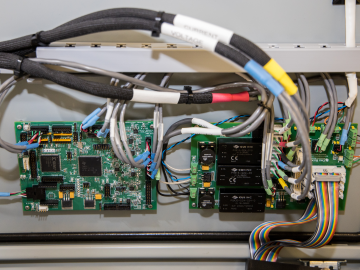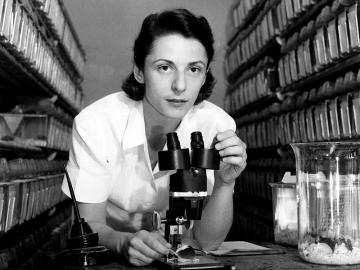Filter News
Area of Research
- (-) Clean Energy (79)
- Advanced Manufacturing (5)
- Biological Systems (2)
- Biology and Environment (6)
- Building Technologies (3)
- Climate and Environmental Systems (3)
- Computational Engineering (1)
- Computer Science (7)
- Fossil Energy (1)
- Fusion Energy (5)
- Materials (51)
- National Security (5)
- Neutron Science (31)
- Nuclear Science and Technology (17)
- Quantum information Science (2)
- Sensors and Controls (1)
- Supercomputing (31)
- Transportation Systems (1)
News Type
News Topics
- 3-D Printing/Advanced Manufacturing (9)
- Artificial Intelligence (1)
- Bioenergy (3)
- Biology (1)
- Biomedical (2)
- Biotechnology (1)
- Clean Water (3)
- Climate Change (1)
- Composites (1)
- Computer Science (6)
- Cybersecurity (1)
- Energy Storage (5)
- Environment (10)
- Grid (5)
- Materials Science (4)
- Mercury (2)
- Microscopy (1)
- Nanotechnology (2)
- Nuclear Energy (1)
- Polymers (2)
- Security (1)
- Space Exploration (2)
- Sustainable Energy (3)
- Transportation (11)
Media Contacts

While Tsouris’ water research is diverse in scope, its fundamentals are based on basic science principles that remain largely unchanged, particularly in a mature field like chemical engineering.

Researchers at Oak Ridge National Laboratory have developed an innovative control system for repurposed electric vehicle battery packs to store electricity

The life and legacy of Dr. Liane Russell – world-renowned for her groundbreaking genetics research in mice – will be celebrated during a symposium on December 20 beginning at 8:30 a.m. at Oak Ridge National Laboratory.

Students often participate in internships and receive formal training in their chosen career fields during college, but some pursue professional development opportunities even earlier.

Buildings use 40 percent of America’s primary energy and 75 percent of its electricity, which can jump to 80 percent when a majority of the population is at home using heating or cooling systems and the seasons reach their extremes.

ORNL researchers created and tested new wireless charging designs that may double the power density, resulting in a lighter weight system compared with existing technologies.

A team of scientists found that critical interactions between microbes and peat moss break down under warming temperatures, impacting moss health and ultimately carbon stored in soil.

Researchers demonstrated that an additively manufactured hot stamping die can withstand up to 25,000 usage cycles, proving that this technique is a viable solution for production.

Elizabeth Herndon believes in going the distance whether she is preparing to compete in the 2020 Olympic marathon trials or examining how metals move through the environment as a geochemist at the Department of Energy’s Oak Ridge National Laboratory.

In the vast frozen whiteness of the central Arctic, the Polarstern, a German research vessel, has settled into the ice for a yearlong float.




